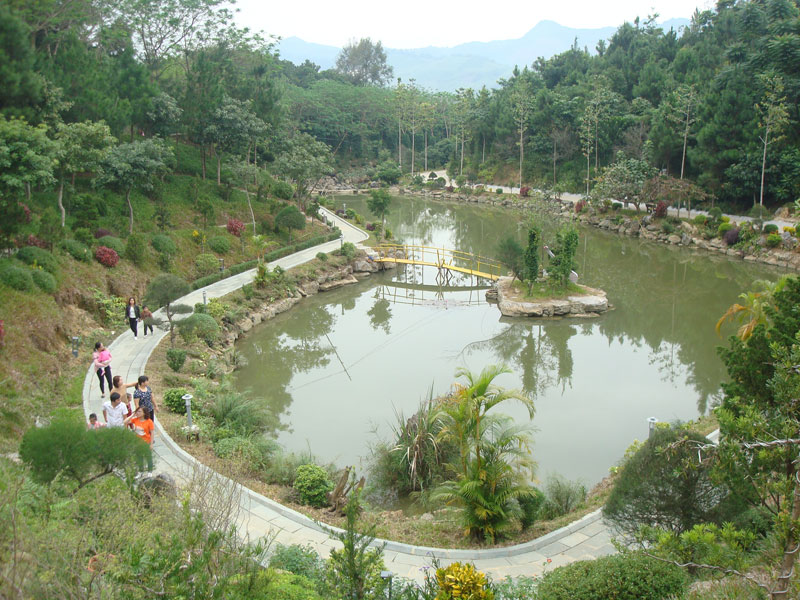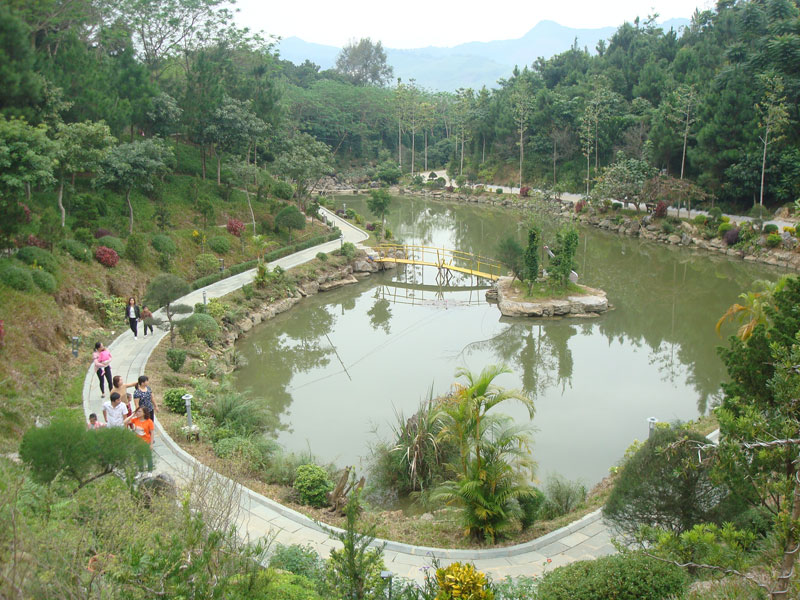



The Heritage Park for Vietnamese Scientists and Scholars in Tieng hamlet, Bac Phong commune, Cao Phong district is an attractive destination for visitors across the country.
There are 29 other tourist sites in the province. Besides well-known destinations to domestic and international tourists like Hoa Binh Hydropower Plant; Hoa Binh Lake; Lac village in Chieng Chau commune, and Pom Coong and Van villages of Mai Chau town (Mai Chau district); Giang Mo village of Binh Thanh commune (Cao Phong district); Tien pagoda (Lac Thuy district); Khoang spring tourist site (Kim Boi district).
New tourist sites have drawn more tourists to the province, notably the Heritage Park for Vietnamese Scientists and Scholars (Heritist Park) in Tieng hamlet, Bac Phong commune, Cao Phong district.
Deputy Director of the Heritist Park Bui Phuong Cham said that the park, covering an area of 30ha, comprises a central zone, a convention centre, and food – entertainment and production zones. It is a multi-functional centre with a park of science, culture and eco-tourism. More than 300,000 documents of over 1,000 Vietnamese scientists are being reserved at the park. The exhibits introduce the development of Vietnam’s science through scientists’ lives and honour scientists who contributed greatly to the country’s science sector.
To date, the park has nurtured over 350 species, with more than 80,000 trees, creating a clean and relaxing green space.
The tourism map of Hoa Binh province has been added with new types of tourism and destinations, namely the Heritist Park, Bong Lai shrine, Dau Rong mountain, Cao Phong town (Cao Phong district), Ngoi village of Ngoi Hoa commune (Tan Lac district), Da Bia village of Tien Phong commune and Ke village of Hien Luong commune (Da Bac district), Buoc village of Xam Khoe commune (Mai Chau district), money-printing facility in Co Nghia commune (Lac Thuy district), Serena and V’Resort eco-tourism areas (Kim Boi district), Mai Chau Ecolodge, Mai Chau Villa and Sun Bungalow eco-tourism sites in Mai Chau district, among others.
Especially, the Prime Minister approved a project to turn Hoa Binh Lake and Mai Chau district into national tourism areas, opening up opportunities for the province’s tourism sector to "take off”.
Since 2007, the province has invested more than 207 billion VND in building tourism infrastructure, with about 170 billion VND from the State budget and 40 billion VND from the local budget. As many as 36 projects were licensed to invest in tourism with total registered capital worth about 4.84 trillion VND and 38 million USD.
Of which, the projects to build ecological resorts, hotels and golf courses will be launched in Hoa Binh city and districts of Luong Son, Mai Chau, Lac Thuy, Kim Boi and Ky Son.
In 2017, the province expects to welcome 1.9 million visitors, including 174,000 foreigners. Total tourism revenue is estimated to hit about 984 billion VND this year./.